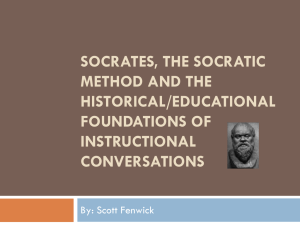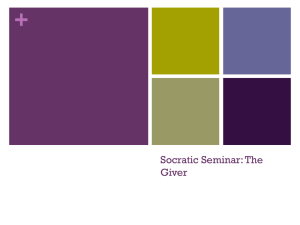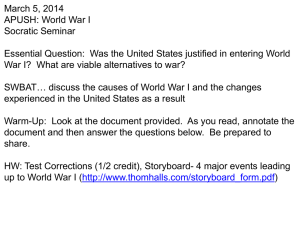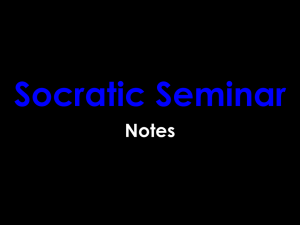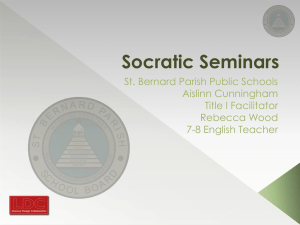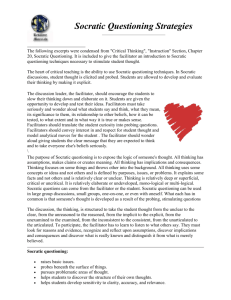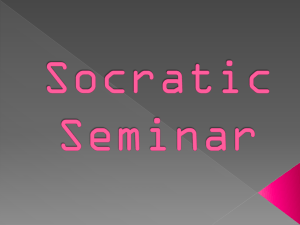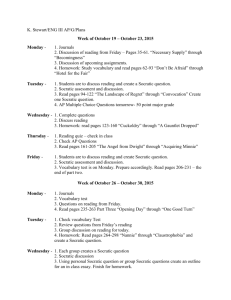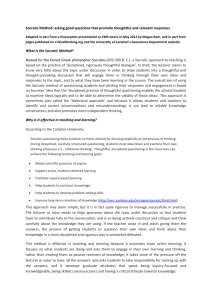The Socratic Method - teaching21stcenturyskills
advertisement
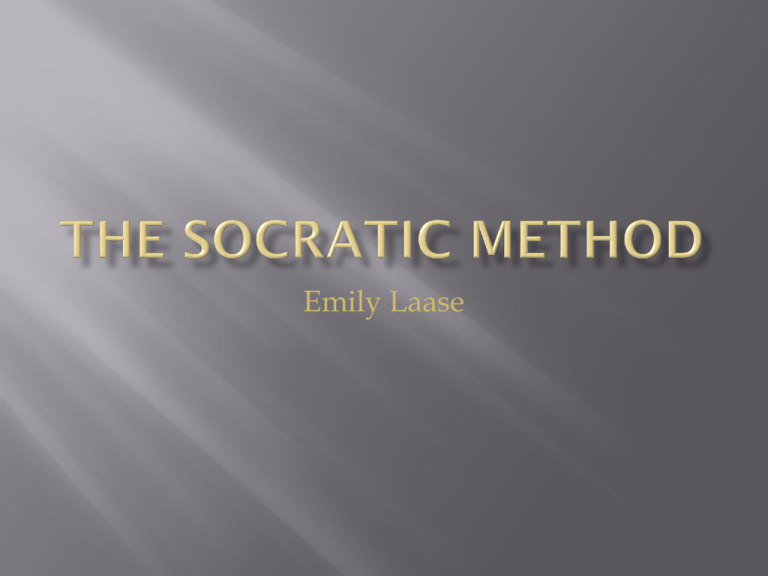
Emily Laase The Socratic Method is a very ancient teaching style developed by Socrates. Socrates 470 – 399 B.C. Dedicated to the search for truth Advocate of questioning Often critical of the government Chose death rather than give up teaching Socrates’ fundamental principle: “Knowledge is virtue” The Socratic Method is… The search for truth Discussion And above all Questioning Questioning Questioning Taken from The Theory and Practice of Teaching by Peter Jarvis Four specific questioning strategies: 1. Helping learners to call to mind what they have learned preconsciously or their tacit knowledge 2. Leading learners through a carefully structured sequence of questions to a predetermined answer 3. 4. Starting learners on a questioning process which is totally unstructured at the outset Having question and answer tests to aid memory recall “What is forgotten is not lost forever but can be recalled with sufficient effort. It is in the mind even if one must exert herself to bring it to consciousness” -Kenneth Seeskin During a Socratic Seminar, students learn to: Listen actively Converse directly with other students, without the need for mediation by the teacher Clarify, amplify, and recognize implications in the text Build upon what others say Question the text and fellow participants. Uncertainty as to where discussion might lead can make it difficult to fit into a highly structured curriculum Failure without student participation Some students dislike that there is no “right” answer Many students fear speaking in front of a group Nevertheless… it can still be used effectively The Socratic Method can be used for… Many different subjects… and… Many different age groups… Ranging from elementary education to law school! http://www.youtube.com/watch?v=je_WNjjTg_ o&feature=related http://www.youtube.com/watch?v=gKfm8TCut Pg Identify the big question that will be used to kick off the Socratic Seminar. Prepare an additional 6-10 follow-up questions that are apt to be used during the Seminar. Tips: 1. 2. 3. 4. Be flexible and allow students to express opinions. Allow “mistakes.” They can be valuable discussion points and learning experiences! Don’t be afraid of silence! You CAN get the discussion going! Sometimes waiting is all it takes to get an answer! Intervene if a student dominates the discussion and encourage participation without embarrassment. Over two thousand years ago... Socrates saw what was crucial to human learning. Learning has evolved… but many of the same principles still apply. The Socratic Method can still work in a modern classroom! Anyway…students are bound to like it better than another test, right? Good Luck! Garrett, Elizabeth (1998). The Socratic Method (Green Bag Article). Retrieved from http://www.law.uchicago.edu/socrates/soc_article.html Jarvis, Peter (2002). The Theory and Practice of Teaching, Second Edition. New York: Routledge Publishing Company. Johnson, James A., Musial, Diann, Gollnick, Donna M., Dupuis, Victor L. (2008). Foundations of American Education: Perspectives in a Changing World, Fourteenth Edition. Boston: Pearson Publishing Company. Neumayr, John W. (2010). The Socratic Method. Retrieved from http://www.thomasaquinas.edu/curriculum/socratic.htm Seeskin, Kenneth (1987). Dialogue and Discovery: A Study in the Socratic Method. Albany: State University of New York Press. Speaking of Teaching: Stanford University Newsletter of Teaching (2003). Retrieved from http://ctl.stanford.edu/Newsletter/socratic_method.pdf STEM Socratic Seminar (2010). Retrieved from http://stemresources.com/lesson_builders/socratic-seminar
